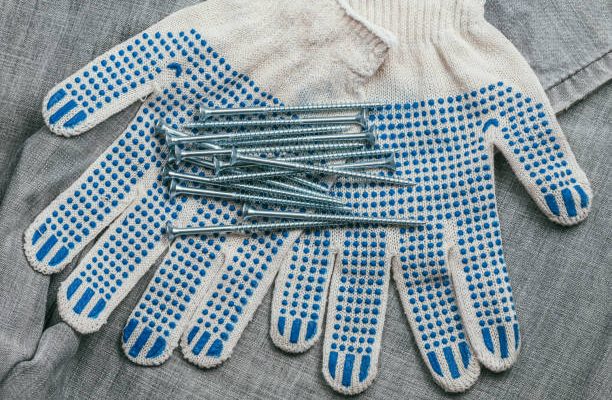1. Understanding Kevlar:
Kevlar, a synthetic fiber developed by DuPont, is known for its exceptional strength, durability, and heat-resistant properties. It is five times stronger than steel on an equal weight basis and has a high melting point of around 450 degrees Celsius. These characteristics make kevlar heat resistant gloves an ideal material for manufacturing heat-resistant gloves that can withstand extreme temperatures and protect workers from burns and injuries.
2. Benefits of Kevlar Heat Resistant Gloves:
a) Heat Resistance:
Kevlar gloves are designed to provide superior heat resistance, allowing workers to handle heated objects, open flames, and molten materials without experiencing burns or discomfort. The gloves can withstand high temperatures, providing a barrier between the skin and the heat source.
b) Cut and Abrasion Resistance:
Kevlar is also known for its excellent cut and abrasion resistance. This property is crucial in industries where sharp objects are used, as the gloves offer protection against accidental cuts or abrasions caused by handling abrasive materials.
c) Comfort and Flexibility:
Despite their rugged construction, Kevlar heat-resistant gloves are designed with comfort and flexibility in mind. They are generally lightweight and form-fitting, allowing for dexterity and ease of movement during tasks. Some gloves incorporate ergonomic designs for enhanced comfort during prolonged wear.
d) Durability and Longevity:
Kevlar gloves are made to last. The exceptional durability of Kevlar fibers ensures that the gloves can withstand prolonged exposure to heat and harsh conditions without compromising their integrity or protection levels. Their durability reduces the need for frequent replacements, resulting in cost savings and increased productivity.
3. Applications of Kevlar Heat Resistant Gloves:
Kevlar heat-resistant gloves find extensive use in various industries and professions, including:
a) Firefighting:
Firefighters rely on Kevlar gloves to protect their hands while battling blazes. The gloves provide heat resistance, allowing firefighters to handle fire hoses, equipment, and rescue victims without sustaining injuries.
b) Manufacturing:
Workers in industries such as metalworking, glassblowing, and automotive manufacturing benefit from Kevlar gloves, which offer protection from sparks, splashes of molten metal, and hot surfaces.
c) Oil and Gas Industry:
Kevlar gloves are essential for workers handling flammable materials and performing welding tasks. They provide protection against sparks, flames, and high temperatures encountered in the oil and gas sector.
d) Automotive Repair and Maintenance:
Automotive technicians use Kevlar gloves to prevent burns and injuries while working with hot engines, exhaust systems, and welding operations.
e) Construction and Roofing:
Workers in construction and roofing industries utilize Kevlar gloves for tasks involving hot asphalt, roofing materials, and handling heated tools.
4. Maintenance and Care:
To ensure the longevity and effectiveness of Kevlar heat-resistant gloves, proper maintenance and care are essential:
a) Regular Inspection:
Regularly inspect the gloves for any signs of wear, holes, or damage. Promptly replace gloves that show signs of deterioration to maintain optimal protection.
b) Cleaning and Sanitization:
Clean the gloves as per the manufacturer’s instructions to remove dirt, grime, and contaminants. Proper sanitization is vital to prevent the spread of bacteria and maintain hygienic conditions.
c) Storage:
When not in use, store the gloves in a dry, cool place away from direct sunlight and sources of heat. Proper storage helps preserve the integrity and protective properties of the gloves.
Conclusion:
Kevlar heat-resistant gloves are a crucial safety gear for workers exposed to extreme heat and flames in various industries. Their exceptional heat resistance, durability, and comfort make them ideal for handling hazardous materials and performing tasks in demanding environments. By investing in high-quality Kevlar gloves, employers can ensure the safety and protection of their workforce while enhancing productivity and efficiency. Regular maintenance and care of the gloves are essential to ensure their longevity and effectiveness.










Comments